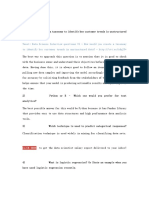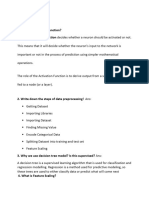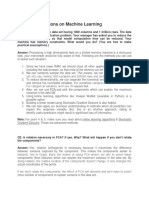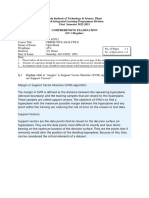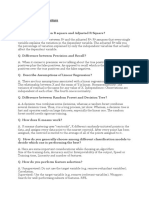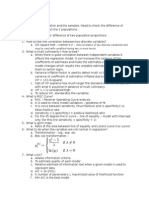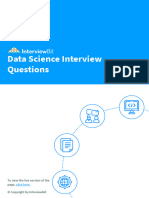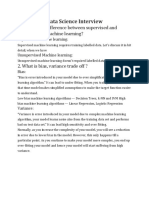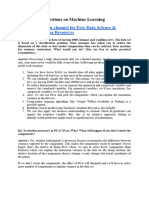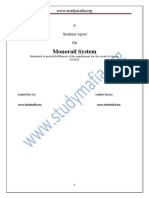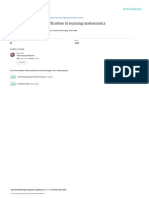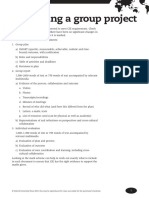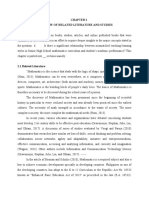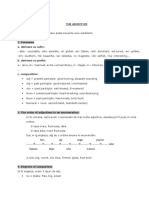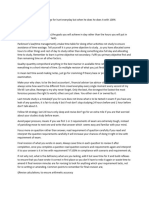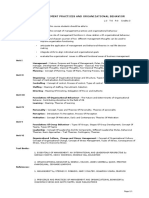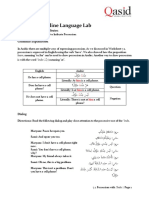0% found this document useful (0 votes)
6 views11 pagesStatistics and ML
The document covers various statistical concepts and machine learning techniques, including correlation, covariance, p-values, KNN vs. k-means clustering, Type 1 and Type 2 errors, PCA, precision and recall, and root cause analysis. It also discusses sampling methods, linear regression, hypothesis testing, bivariate distribution, and the bias-variance trade-off. Additionally, it explains the relationship between data science and statistics, as well as ensemble learning techniques like bagging and boosting.
Uploaded by
sai charanCopyright
© © All Rights Reserved
We take content rights seriously. If you suspect this is your content, claim it here.
Available Formats
Download as DOCX, PDF, TXT or read online on Scribd
0% found this document useful (0 votes)
6 views11 pagesStatistics and ML
The document covers various statistical concepts and machine learning techniques, including correlation, covariance, p-values, KNN vs. k-means clustering, Type 1 and Type 2 errors, PCA, precision and recall, and root cause analysis. It also discusses sampling methods, linear regression, hypothesis testing, bivariate distribution, and the bias-variance trade-off. Additionally, it explains the relationship between data science and statistics, as well as ensemble learning techniques like bagging and boosting.
Uploaded by
sai charanCopyright
© © All Rights Reserved
We take content rights seriously. If you suspect this is your content, claim it here.
Available Formats
Download as DOCX, PDF, TXT or read online on Scribd
/ 11
